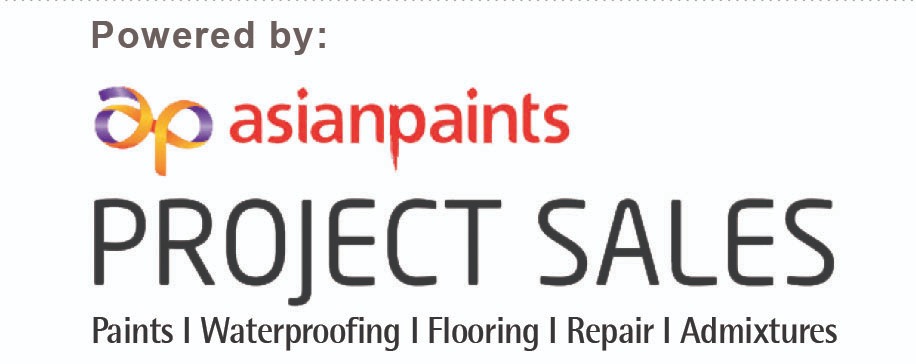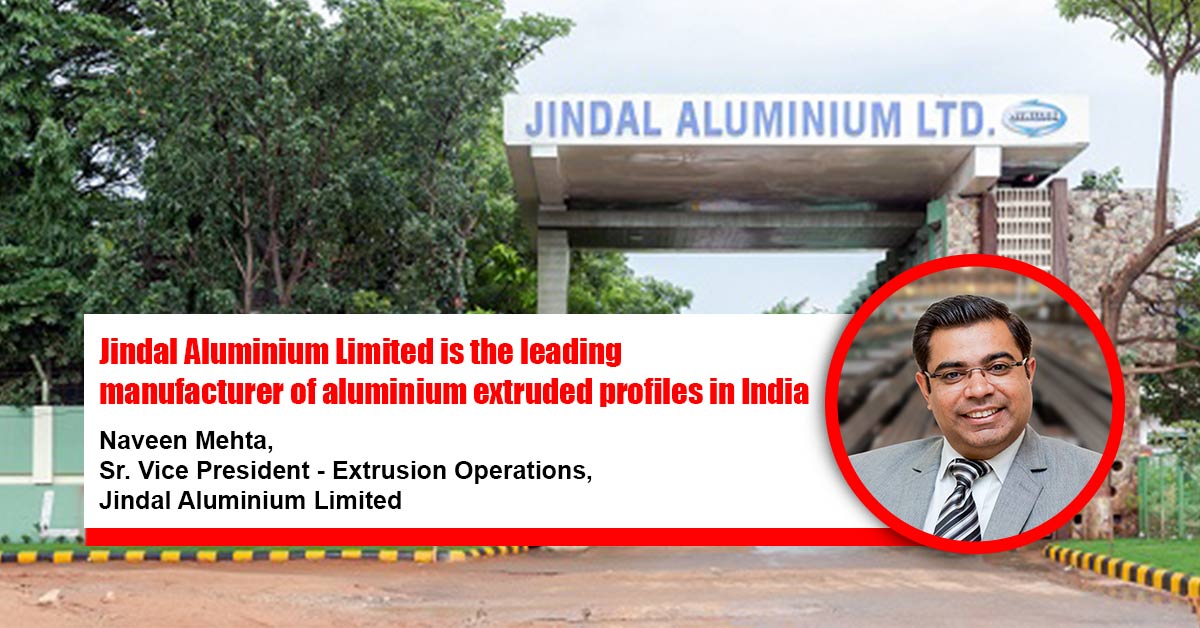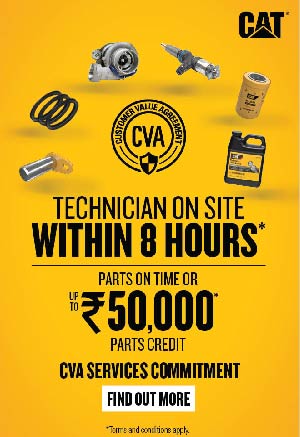Advanced construction technologies enhancing speed and durability
By Edit Team | July 12, 2024 3:57 pm SHARE

This story encapsulates CC-KLI: Construction Chemicals Knowledge Leadership Initiative – India’s Leading Construction Chemicals Summit, Powered by Asian Paints Ltd, a platform where industry experts join hands in sharing their knowledge & experience aimed towards adoption of advanced construction practices.
With fast-paced infrastructural growth in India, construction practices are undergoing sweeping changes. Our future requires sustainable, efficient methods and smarter approaches to building a new world. Asian Paints recognises the growing need for continuous learning and innovation in the ever-evolving construction industry and they champion this through CC KLI – Construction Chemicals Knowledge Leadership Initiative, which fosters creativity and forward-thinking solutions.
CC KLI is a series of events being held in all key cities across the country. The first chapter from 7th edition of KLI unfolded in the vibrant city of Chennai. The event flagged off with the delegates & the Asian Paints team engaging at, the “Innovation Station -SmartCare System Solutions Exhibit”, stalls built to showcase the remarkable advancements across various product categories, like Waterproofing, Repair & Restoration, Floor Coating & Admixtures offering the attendees unprecedented value and insights.
Post this engagement and product demos, by the Asian Paints Senior Leadership Team addressed the gathering. They stated it is imperative to provide a forum for industry experts to discuss advancements in construction technologies & sustainable practices for the benefit of the construction industry. They emphasised the initiative’s role in bridging knowledge gaps and fostering innovation through collaboration and knowledge sharing. The event brought together industry elites and diverse professionals from Academia, Government bodies, Civil Construction Companies (CCCs), Project Management Companies (PMCs), Builders Firms & Structural Consultants and Architects.
Padma Shri Mr. C N Raghavendran was the Chief Guest of the Event. He opened the event with his insightful note to the audience, stressing the need to reduce carbon footprints in construction. Prof. Dr. Manu Santhanam then captivated the attendees with his keynote address on “Decarbonisation of Construction Industry,” offering insights on sustainable & practical green solutions. His groundbreaking research, focused on minimizing the carbon footprint in construction, promised to change the way we think about building. By showcasing practical solutions for a greener future, Dr. Santhanam’s work underscored the crucial role construction plays in combating climate change.
A panel discussion followed, focusing on “Smart Construction Practices” to accelerate the pace of construction and improve the durability of the structures. The panellists through the course of the panel discussion explored innovative construction techniques and sustainable architectural designs, covering topics like sustainable materials, precast, 3D printing of concrete, BIM integration, drones/UAVs for project monitoring, and digitalisation.
he evolution of concrete technology
One of the central themes of the discussion was the evolution of concrete technology. Dr K Sivakumar, Head—Concrete Technology, Buildings & Factories IC, L&T Construction, gave an in-depth analysis of advancements in this field. He explained how the industry had progressed from using M10 grade concrete to M70 grade, offering superior strength and durability. This progression is driven by the need to construct buildings that withstand various environmental stresses and have a longer lifespan.
“Concrete is not just a material; it’s a science,” Dr Sivakumar stated, emphasising the complexity of creating high-performance concrete mixes. He discussed the importance of understanding the properties of different materials and how they interact under various conditions.
Dr Sivakumar also highlighted the challenges associated with implementing advanced concrete technologies on-site. While designing high-grade concrete is a significant achievement, its success largely depends on proper execution. Issues such as improper mixing, inadequate curing, and environmental factors can compromise the quality of concrete, leading to structural problems.
Discussing the usage of M70 grade concrete in high-rise buildings, Dr Sivakumar explained that while the material offers superior strength, its implementation requires precise mixing and curing processes. “High-grade concrete is only as good as its application,” he reiterated, emphasising the need for skilled labour and stringent quality control measures.
Technologies in action
New technologies are set to revolutionise the construction industry. Tools like Building Information Modelling (BIM) and automated construction equipment are improving project management, enhancing precision, reduce errors and boosting efficiency.
Mr. Jenefar Raj, Vice President, Projects, DLF Home Developer, shared insights from DLF’s projects, illustrating how technologies like Building Information Modelling (BIM) and automated construction equipment revolutionise project management.
“BIM allows us to visualise every aspect of a project before construction begins,” Mr Raj explained. This technology provides a detailed digital representation of the physical and functional characteristics of a building, enabling better planning and coordination. By identifying potential issues early in the design phase, BIM helps prevent costly mistakes and delays during construction.
Another significant advancement is the use of automated construction equipment. Mr Raj described how DLF integrates machinery such as robotic bricklayers and automated concrete mixers into their projects. These machines improve efficiency and precision, saving the time and labour required for construction tasks and also reduce the hazardous tasks from workers.
“Automation is changing the face of construction,” Mr Raj noted. “It allows us to complete projects faster and with greater accuracy, ultimately leading to better quality buildings.”
Bridging knowledge gaps
Dr.Ponni M Concessao, Principal Architect and Founder of Ponni, Oscar & Rahul Architects, Chennai, pointed out that while technological advancements are crucial, their successful implementation depends on disseminating knowledge and best practices across the industry.
“Knowledge sharing is the cornerstone of progress,” Dr Concessao stated. She discussed the importance of creating platforms where professionals can exchange ideas, share experiences and learn from each other. This approach accelerates the adoption of new technologies and ensures that all industry participants are equipped to meet emerging challenges.
Dr Concessao also elaborated on blending innovation with heritage in architectural design. She highlighted projects where modern technologies preserve and enhance historical buildings. This approach respects cultural heritage and brings new functionalities and efficiencies to old structures.
“Innovation and heritage are not mutually exclusive,” said Dr Concessao. “Combining the two creates technologically advanced and culturally significant buildings.” She explained how her firm successfully incorporated advanced materials and techniques into heritage conservation projects, resulting in structures that meet contemporary needs while preserving their historical value.
Sustainable construction practices
Sustainability remains a critical focus in construction, with industry leaders exploring strategies to reduce the environmental impact of construction. Dr. Manu Santhanam, Dean, IC&SR (Industrial Consultancy and Sponsored Research) from IIT Madras, presented an overview of sustainable construction practices, emphasising the importance of minimising embodied CO2 and energy in building materials.
“Construction is one of the largest contributors to carbon emissions,” Dr Santhanam stated. “We must adopt practices that reduce our carbon footprint and promote environmental sustainability.” Initiatives include using recycled materials and energy-efficient construction methods.
“We need a regulatory framework supporting sustainability,” said Er. C Balamurugan, Executive Engineer & Head of Quality Control Division, PWD, Tamil Nadu. He pointed out that while some regions have progressive policies, others lag the same. A uniform approach is necessary nationwide to ensure all construction activities align with sustainability goals.
While policy support is crucial, industry stakeholders must also take proactive steps to adopt eco-friendly practices. “Sustainability should be a core value, not just a regulatory requirement,” Mr Raj commented.
“Cost is a significant barrier,” Mr Raj admitted. “However, we need to look at the bigger picture. Investing in sustainable practices today will pay off in the future through reduced operating costs and increased property values.” Government incentives and subsidies could help offset initial costs and encourage wider adoption of sustainable practices.
Enhancing durability via strategic planning
Er Balamurugan, renowned for his expertise in structural engineering, emphasised the pivotal role of meticulous planning in bolstering the durability of buildings. “Effective planning is the cornerstone of building durability,” he asserted. “By carefully designing spaces with adequate service provisions, we can eliminate the need for haphazard core cutting, ensuring structural integrity for years to come.” His insights shed light on the critical importance of foresight in architectural design. “Planning plays a crucial role in preserving the longevity of structures,” he added, “Thoughtful design that includes proper service cutouts minimises the risks associated with core cutting, safeguarding buildings against avoidable structural weaknesses.” Er Balamurugan’s perspective underscores the proactive approach needed to mitigate construction risks and enhance the resilience of urban landscapes.
Practical applications and case studies
Bringing practical perspectives, Mr Jennifer Raj and Er Balamurugan shared case studies from their respective fields. Mr. Raj discussed successful projects they have executed in the past, where value engineering and risk assessment deliver quality outcomes within budget constraints. He illustrated how integrating technologies streamlines project management, enhancing efficiency and reducing costs.
He shared examples where innovative solutions achieve significant cost savings without compromising quality. “Value engineering is about balancing cost, quality, and time,” he explained, highlighting the importance of holistic project management.
Er Balamurugan provided insights into the challenges and successes of rehabilitation projects at PWD Chennai. He mentioned projects like Valluvar Kottam and Namakkal Kavingnar Maligai, employing advanced materials and techniques to restore structural integrity and extend the lifespan of these iconic structures. “Rehabilitation preserves the heritage and ensures safety,” Er Balamurugan emphasised, underscoring the need for expertise and innovation in such projects.
Engaging the next generation
Engaging the next generation of construction professionals is crucial for the industry’s future. Dr. Concessao highlighted the need for education and training programs to equip young professionals with the skills for advanced technologies and sustainable practices, ensuring the sector’s continued growth and innovation.
“Investing in education is investing in the future of our industry,” she asserted, emphasising the role of academic institutions in providing theoretical foundations and practical training for young professionals to excel in the construction sector.
Looking to the future
The potential for technologies and sustainable practices to drive significant improvements in the construction sector is immense. The industry’s future looks promising, with ongoing innovation, collaboration, and education paving the way for a resilient and sustainable environment.
The collective effort of industry leaders, policymakers, and educators will be crucial in shaping the trajectory of the construction industry. Embracing these advancements, the sector can ensure a brighter, more sustainable future for future generations.

Cookie Consent
We use cookies to personalize your experience. By continuing to visit this website you agree to our Terms & Conditions, Privacy Policy and Cookie Policy.


































-20240213125207.png)

























